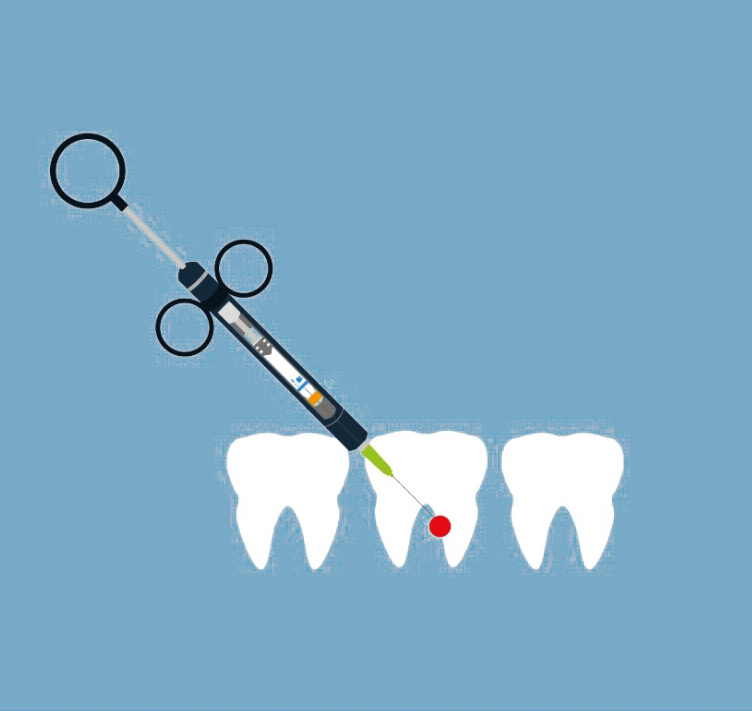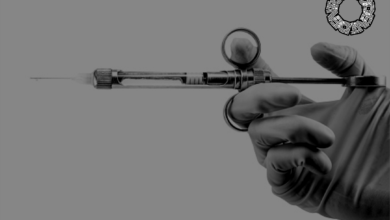
General guidelines for safe and painless injections include:
The basic injection procedures are:
- Use a sterile, sharp needle.
- Use an appropriate gauge and needle length for the injection site.
- Check the flow of the anesthetic solution by expelling a few drops of local anesthetic solution from the cartridge.
- The weapon and the anesthetic cartridge must be stored at room temperature.
- The patient should be comfortably reclined to reduce the occurrence of fainting (head parallel to the heart and feet slightly elevated).
- Use gauze to dry the injection area.
- Communicate to the patient at this time that you are taking steps to ensure that the procedure will be as comfortable as possible.
- Apply a topical antiseptic with a cotton swab to reduce the risk of infection.
- Use Betadine or Merthiolate , not one containing alcohol because it can irritate the tissues .
- Apply topical anesthetic to the area of tissue penetration with cotton tipped applicator .
- Keep the applicator in place for two minutes to allow the topical anesthetic time to take effect .
- Explain to the patient at this time about the topical gel , how it anesthetizes the area and makes the procedure more comfortable .
- Use positive terms like anesthetic , comfortable , and procedure rather than Novocaine , pain, or shot .
- Try not to make promises that are unreasonable like ” You won’t feel anything ” or ” This will not hurt
- have the armamentarium behind the patient and passed out of the field of vision
- Pull the tissue as taut as possible .
- Use a firm hand rest and move with purpose .
- Penetrate the tissue up to the end of the bevel . Watch the patient for signs of discomfort and slowly deposit a drop or two of anesthetic
- Advance the needle slowly to the target depth and deposit a few drops of anesthetic as you go.If you approach bone , make sure to deposit a few drops of anesthetic and wait a few seconds because this area is highly innervated .
- Aspirate : Draw the plunger ring back just a few millimeters to produce negative pressure withinthe cartridge.If blood is visible in the cartridge , withdraw the needle slightly and aspirate again .If there is no visible blood , deposit a few drops of anesthetic and aspirate again . If still negative , slowly deposit more anesthetic Slow depositing of the anesthetic keeps the tissues in the area from tearing and reduces postoperative discomfort .Deposit about 1/4 of the required dose , then aspirate again. Continue aspirating and depositing until the desired dose is administered
- Slowly withdraw the needle
- Be careful while recapping the needle and use a proper technique .
- Make sure that some one stays in the room with the patient to observe any adverse reaction to the anesthetic.
- Enter the type of anesthetic used, the concentration of vasoconstrictor, the amount of solution given, what gauge needle was used, what type of injection method was used, and the patient’s reaction in the patient’s chart.


